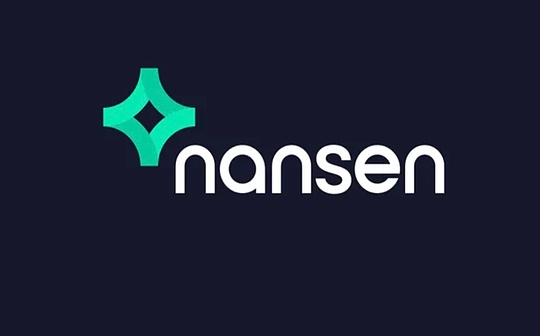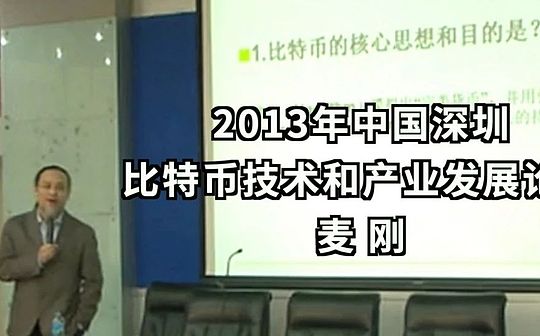V God guides the road to the bull market: Deconstructing the three troika driving the Ethereum value flywheel

転載元: jinse
06/20/2025·1DWritten by: Oliver, Mars Finance
On June 19, 2025, when Vitalik Buterin, the soul of Ethereum, replaced the oil barrel icon that originally represented "digital oil" with a cartoon "cow" image on social media, this was not a casual graffiti. This seemingly slight move is more like a carefully planned value declaration, a profound reshaping of the logic of Ethereum's bull market. It implies that today when spot ETFs have laid the red carpet for Wall Street, the story of Ethereum is transcending the slightly outdated "digital world fuel" metaphor and evolved into a larger, more stable, and more complex value paradigm.

What Buterin forwarded and "edited" is a discussion about the three core values of Ethereum - "digital oil", "storage of value" and "global reserve assets". These three concepts have long been familiar melodies in the community, but when they are juxtaposed by the founder in a completely new visual language, their inner tension and synergies emerge with unprecedented clarity. This "ox" is no longer a symbol of a single narrative, but an economic giant created by the three pillars. This article aims to deeply deconstruct this new paradigm that is forming and explore how profound and subtle changes have taken place in the foundation of Ethereum's value as it moves towards mainstream assets.
From "Digital Oil" to "Economic Heart": Revaluation of Value in the L2 Era
Ethereum’s narrative as “digital oil” is its earliest and most successful value positioning. This metaphor intuitively explains the fundamental purpose of ETH: as the fuel (Gas) that drives the operation of the world's largest smart contract platform. Every transfer, every DeFi interaction, and every NFT casting requires ETH consumption. This indispensable practicality has built a solid demand base for ETH. In the past, network congestion and high gas fees were even seen as a manifestation of network prosperity, directly linked to ETH's value capture.
However, entering 2025, this classic narrative is facing a profound challenge triggered by Ethereum's own success. The Dencun upgrade in March 2024, especially the implementation of EIP-4844 (Proto-Danksharding), has completely changed the rules of the game. By providing a dedicated and inexpensive data publishing channel (Blobs) for the Layer 2 (L2) network, Ethereum has successfully "outsourced" a large number of transaction activities to expansion solutions such as Arbitrum and Optimism. This is undoubtedly a huge technological victory, realizing the grand blueprint for allowing ordinary users to participate in the digital economy at extremely low costs. But it also brings a sharp economic paradox: when the vast majority of economic activities migrate to the cheap L2, the congestion on the mainnet (L1) dropped sharply, directly leading to a plummeting Gas fee and a sharp drop in ETH burning.
According to data on Dune Analytics, the average Gas price of Ethereum L1 has been in single-digit Gwei for a long time since the Dencun upgrade, which is unimaginable in the past few years. The reduction in costs means that the amount of ETH destroyed through the EIP-1559 mechanism also shrinks. This directly impacts the core logic of the "digital oil" narrative - that is, the positive correlation between network usage and value capture (deflation). If the consumption of “oil” is decreasing structurally, how should we evaluate its value?

This is the key to the value paradigm transfer. The new cognitive framework believes that the value of ETH is no longer reflected only in the fuel "consumed" on L1, but is upgraded to the "economic heart" that ensures the security of the entire modular ecosystem. Ethereum L1 is transforming from a crowded "world computer" to a highly secure "global settlement and security layer". Its core task is to provide finality and data Availability guarantees for hundreds of L2s. L2 process a large number of transactions, and then submits the compressed "proof" back to L1 for final confirmation.
In this new model, the value capture mechanism of ETH becomes more indirect, but may also be more stable. Its value no longer comes primarily from transaction friction, but from its “rent” as a security provider. Although the fees paid to L1 by a single L2 have been reduced, the scale of this total "rental" is still considerable as thousands of L2s emerge in the future. More importantly, the security of the entire ecosystem depends entirely on the total value of ETH staking on L1. A modular ecosystem with trillions of dollars in economic activity must be protected by a security layer of the same size and even higher magnitude. Therefore, the demand for ETH has shifted from "transactional demand" to "security demand". It is no longer gasoline, but concrete that supports the foundations of the entire Intercontinental Highway Network (all L2) whose value is positively correlated with the total economic flow of the highway network (all TVL and activity of all L2). This transformation frees the value of ETH from short-term cost volatility and anchors itself on longer-term macro-growth across the ecosystem.
The rise of "Internet Bonds": When "ultrasound" returns to silence
If the narrative of "digital oil" is undergoing a profound self-evolution, the story of "store of value" has been almost completely rewritten. Once upon a time, "Ultrasound Money" was the most proud slogan of the community. Under the dual effects of the "Merge" that significantly cuts new issuances and the continuous combustion costs of EIP-1559, ETH once entered a net deflation state, and was hailed as a more "solid" asset than Bitcoin's "solid currency". The continuously jumping negative inflation rate on ultrasound.money website is the core belief that countless investors firmly believe that ETH can surpass BTC.
However, the L2 paradox mentioned above also casts a shadow on this beautiful deflation myth. The reduction in L1 costs greatly reduces the power of the combustion mechanism. Data shows that since Dencun upgraded, ETH has returned to a slight inflation state in many periods. This makes the slogan of "ultrasonic currency" a bit embarrassing and forces the market to find a more resilient value support.
As a result, the narrative of "The Internet Bond" came into being and quickly became a more attractive story in the eyes of institutional investors. The core of this concept is that through the Proof of Stake (PoS) mechanism, anyone holding ETH can participate in network verification through staking and thus obtain stable returns denominated in ETH. As of mid-2025, Ethereum's annualized staking yield (APR) has stabilized at around 3%-4%. This profit is not generated out of thin air. It comes from the transaction fees paid by users (tip portion) and the ETH reward issued by the agreement. It is a reasonable reward for the services provided by the verifier to maintain network security.
This endogenous income denominated by protocol native assets makes ETH a productive capital asset. It is no longer just a static commodity waiting for appreciation, but an interest-generating asset that can continuously generate "cash flow" (albeit ETH-based). This is an extremely understandable and attractive model for traditional financial investors who are accustomed to dividends and bond interest. VanEck analysts have clearly pointed out that the staking income of ETH can be regarded as the "risk-free interest rate" in the digital world, and the yield rate of all DeFi protocols built on Ethereum can be priced based on this.
The narrative of “Internet Bonds” has become stronger because of the boom of liquid staking tokens (LSTs). LSTs like Lido's stETH and Rocket Pool's rETH allow ordinary users to obtain pledge income and maintain liquidity of their assets. These LSTs were then deeply integrated into every corner of DeFi, as collateral and trading pairs, creating the so-called "LSTfi" ecosystem. This forms a powerful value flywheel: ETH is pledged heavily due to its interest- generating attributes, thereby improving the security and decentralization of the network; the generated LST has in turn become the cornerstone of the DeFi world, further increasing the demand for ETH as a underlying asset.
This narrative transformation is crucial. It transforms the value proposition of ETH from a speculative story that relies on expectations of network congestion and scarcity to an investment story based on actual economic activity and predictable returns. Even if the deflation halo of "ultrasonic currency" fades, as long as the Ethereum ecosystem continues to flourish, its earning attributes as "Internet bonds" will still exist. This provides ETH with a solid base of value and leaves huge room for imagination for future ETF products - a spot ETF that can directly allocate pledge income to investors will undoubtedly become a nuclear weapon to detonate the next round of institutional demand.
"Anchor of Trust": The Ultimate Settlement Layer of Digital Economy
No matter how the metaphor of "oil" evolves or how attractive the returns of "bonds" are, Ethereum's third and most solid value pillar lies in its position as the "anchor of trust" of the global digital economy. This role, the “global reserve asset,” is built on decentralization, security and unparalleled network effects, making it the most trusted underlying settlement layer in the digital world.
First, in the DeFi world, which has reached hundreds of billions of dollars, ETH is the undisputed king of collateral. In core lending agreements such as Aave and MakerDAO, ETH and its LST derivatives occupy an absolute dominant position in the total amount of collateral. A report from Galaxy Research pointed out that the market trusts ETH because of its deep liquidity, relatively low volatility (compared to other crypto assets) and time-tested security. Users are assured to lend billions of dollars in stablecoins because they believe the ETH collateral behind it is solid. This status as a "DeFi central bank reserve" has created a huge, sustained and sticky demand for ETH.
Secondly, Ethereum is the focus of the global stablecoin ecosystem. Although chains such as Tron occupy a place in USDT issuance, the ultimate settlement of their value for the vast majority of innovative and core stablecoins, such as USDC and DAI, happens on Ethereum. Ethereum carries a stablecoin market value of more than 100 billion US dollars. These stablecoins constitute the blood of the digital economy, while ETH is the vascular system that ensures the safe flow of these blood.
What is more profound is that traditional financial giants are voting with their feet. When BlackRock chose to launch its first tokenized money market fund BUIDL on Ethereum, it was not about Ethereum's transaction speed or cost. On the contrary, it chose Ethereum's "diamond" trust and security. Consensys CEO Joseph Lubin once said that Ethereum provides trust “strong enough to resist nation-state-level opponents.” This "Lindi effect" that has been precipitated after more than ten years of development - the longer it exists, the more likely it will continue to exist - is a moat that no emerging public chain can replicate in the short term. With the rise of the tokenization of real-world assets (RWA), Ethereum's position as the ultimate settlement layer of global value will become increasingly unshakable, and its value as a reserve asset will be continuously consolidated.
Conclusion: Work together to make a "cow", not alone
Now, let's look back at the "cow" sent by Vitalik. It no longer represents only the expectations of a bull market, but is a subtle summary of the source of Ethereum's value. This cow is driven by three forces:
It has a strong pulsation of the “economic heart”: as the security cornerstone of the entire modular ecosystem, its value grows in parallel with the total scale of an expanding digital economy. It has the stable returns of "Internet bonds": endogenous pledge returns provide it with a solid value base and a clear valuation model, attracting long-term capital that pursues stable returns. It bears the weight of "anchored of trust": as the ultimate collateral for DeFi and the settlement layer of global value, it has accumulated the most valuable consensus and trust in the market.
These three pillars do not exist in isolation, but are interdependent and strengthened. The strong "anchored trust" status has attracted the prosperity of DeFi and RWA and driven the growth of the "economic heart"; and the interest-generating ability of "Internet bonds" has inspired massive capital to be pledged, providing indestructible security guarantees for the entire system.
Ethereum's bull market argument has bid farewell to an era where it can be simply summarized by a word (such as "deflation". It becomes more mature, more diverse, and more resilient. It no longer relies on a single narrative, but builds a value matrix with self-consistent internal logic and able to withstand external shocks. For institutional investors who are used to analyzing complex systems, this grand narrative full of inner tension and synergy may have just begun to show its true charm. The cow replaced by God V predicts the arrival of such an era.



